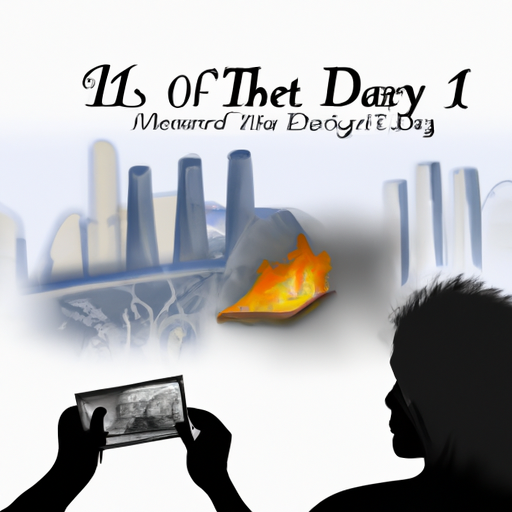A History of Theft in the Victorian Era
Unearth the concealed narrative of thievery in the Victorian period and explore how it has impacted our current reality. Delve deep into a past of mystery, to uncover why people resorted to stealing and how it has molded our world.

A perplexing tale of thievery in the Victorian era, shrouded in mystery and intrigue, is one that still resonates with us today. Though it may seem like a distant past, the effects of these criminal activities are still felt in our society. From pickpockets to burglars, what drove these people to commit such acts? How did law enforcement respond? Uncovering the hidden narrative of thievery during this period can provide us with an understanding of why theft remains such a pervasive issue today. We will explore the motivations behind these criminals’ actions and how their activities have shaped our modern reality.
.
Introduction

Amidst the Victorian era, thievery was a perplexing occurrence. With extreme poverty and inequality, many were pushed to the brink of desperation and resorted to stealing as a means for survival. Motives for these acts ranged from hunger, despair, even plain boredom. Industrialization then added fuel to the fire by bringing an influx of people into cities in search of employment opportunities – yet with limited economic prospects, some resorted to criminal activities such as thieving. The class divisions only worsened matters as the upper class seemed untouchable while those lower on the social ladder were more likely to face severe repercussions for their actions.
– History of Theft in the Victorian Era
The Victorian Era is a period of great fascination when it comes to the story of thievery, as it unveils an alteration in perceptions regarding crime and punishment. In the start of the 19th century, stealing was deemed a grave offence and those discovered responsible were often penalised severely. This could include humiliation in public, transportation to correctional colonies or even death. Nevertheless, by the mid-1800s, outlooks had started to change and there was more empathy for those who had committed minor thefts.
The growth of industrialisation played a major role in this shift in attitude. As increasing numbers of people moved from rural regions to towns for work opportunities, destitution became increasingly widespread and with it came an upsurge in small-scale theft. Numerous people perceived these wrongdoers not as criminals but as victims of their conditions and looked for milder punishments for them. This led to transformations in the law which allowed for other forms of sentencing such as hard labour or prison sentences instead of execution or transportation.
At the same time, advances in forensic science meant that police could now use evidence such as fingerprints or handwriting analysis to identify suspects. This made it easier to prosecute those liable for more serious offences like burglary or robbery. The Victorian era also saw the introduction of new laws intended to safeguard property owners from theft, such as laws that necessitated locks on doors and windows at nightfall.
Overall, the history of theft during this period demonstrates how attitudes towards crime have evolved over time and how progressions in technology have enabled law enforcement agencies to investigate and prosecute offenders more effectively.
– Causes of Theft in the Victorian Era
A period of tremendous transformation, the Victorian Era (1837-1901) saw the industrial revolution bring forth a surge in urbanisation, immigration and destitution. This era was also marked by a rise in thievery, with poverty, inadequate law enforcement and transforming social standards all playing an integral part.
The scarcity of job opportunities and limited wages meant many were unable to make ends meet, leading to desperation and some turning to theft as a means of survival. Moreover, the conditions in some factories were so appalling that workers felt they had no other option than to steal from their employers.
The police force at the time was ill-prepared for the increasing crime rate due to its lack of resources and outdated methods of investigation; thus allowing criminals to evade punishment or receive lenient sentences if caught.
In addition, prior to the industrial revolution stealing was widely considered immoral; however as society shifted so did people’s values which allowed criminals to feel less guilt about their actions and subsequently increased theft during this period.
To summarise, poverty, inadequate policing and changing social norms were all factors in causing theft during the Victorian Era in England; understanding these elements can help us comprehend our own history and how it has shaped our current society.
– Impact of Poverty on Theft in the Victorian Era
Amidst the Victorian Era (1837-1901), destitution ascended to a level never before seen, its impact felt throughout the country in an uptick of theft. With individuals unable to make ends meet, numerous resorted to thieving as a means of subsistence, frequently targeting those of more affluent backgrounds. This surge in poverty likewise resulted in an increase in organized crime and gangs, who took advantage of businesses and people alike.
In order to combat this growing issue, the government passed multiple laws aiming to punish those responsible for such crimes. The Theft Act 1838 was one such law, introducing harsher sentences for those convicted of theft, with imprisonment or transportation being among them. This act was further strengthened by the Prevention of Crimes Act 1871 which imposed stricter penalties for repeat offenders and allowed police officers to search suspects without a warrant.
Apart from legislation, other measures were taken to reduce theft during this period. Private security firms were established to protect businesses from thieves while charitable organizations provided relief for those living in extreme poverty. Despite these efforts however, destitution remained a major issue throughout much of the Victorian Era and had a continuous effect on rates of theft across England.
– Consequences for Stealing During the Victorian Era
During the Victorian Era (1837-1901), criminal behavior was met with swift and stringent repercussions. Stealing, in particular, was a crime that could not be taken lightly; those found guilty were subjected to various forms of punishment, ranging from death or transportation to colonies such as Australia to imprisonment, hard labor, or public humiliation. Financial penalties could also be imposed on thieves, including restitution to victims and fines to the court. The exact consequences of stealing depended upon a variety of factors including the value of what was stolen and whether it was taken from a house or public place. Despite the potential severity of punishments for such offenses, many people still chose to take their chances in order to make a quick profit or provide for their families.”
– Social Attitudes Toward Theft in the Victorian Era
Amidst the Victorian era, society’s views on pilfering were profoundly affected by the then-existing moral and legitimate guidelines. Looking back, it was thought that taking was an unethical demonstration and those who did as such ought to be severely rebuffed. To this end, various laws were passed to rebuff thieves, including detainment and transportation. These laws mirrored the solid good position against taking and demonstrated society’s responsibility regarding ensuring property rights.
The Victorian period additionally saw a blast in public mindfulness about the earnestness of taking. With the development of papers and other types of mass media, stories about burglaries and their outcomes started to spread broadly. This expanded public perceivability prompted a heightened feeling of outrage against those who submitted such wrongdoings. Moreover, certain individuals from society started to see thieves as criminals who merited serious discipline for their activities.
At the same time, there were likewise those in Victorian society who communicated sympathy for those blamed for burglary. Specifically, some contended that neediness was regularly a contributing factor in cases of theft and that people should not be harshly judged if they looked to take out of desperation or need. While this view wasn’t generally acknowledged at that point, it did show a degree of compassion among specific individuals from society towards those blamed for burglary related offenses.
In general, social perspectives on taking during the Victorian period were basically formed by the prevailing moral code which saw it as an immoral demonstration deserving of lawful discipline. While certain individuals from society communicated empathy for those blamed because of destitution or need, most concurred that thieves should be seriously rebuffed so as to secure property rights and keep up equity in society.
conclusion

A perplexing and turbulent combination of poverty, inequality, and economic hardship in the Victorian era brought about a surge in thievery. With industrialization’s proliferation, many were left destitute and without means of supporting themselves, driving them to desperate acts. Furthermore, the social disparities of that time period created a situation wherein certain members of society were more likely to commit such offenses than others.
.
Some questions with answers
Q1. Why did people steal in the Victorian era?
A1. People stole in the Victorian era due to poverty, desperation and other factors.
Q2. What were the consequences of stealing during this time period?
A2. Punishments for theft during the Victorian era could be severe, including transportation to a penal colony, long prison sentences and even death.
Q3. How did society respond to theft?
A3. Society responded harshly to theft in the Victorian era, with punishments being seen as a deterrent to others considering stealing.
Q4. Was there any support for those who had stolen?
A4. Some charities offered support for those convicted of stealing, however this was not widely available and not always successful.
Q5. How has our understanding of history changed since then?
A5. Our understanding of history has changed significantly since the Victorian era, with more focus on social issues such as poverty and inequality that may have led people to steal out of desperation rather than criminal intent.





